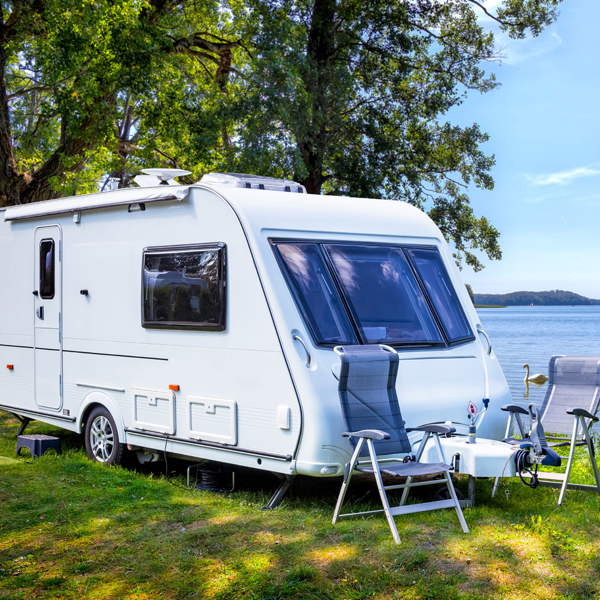Camper vs. RV: what’s the difference?
The term “RV” stands for “recreational vehicle,” but numerous times and words are used to describe an RV. A recreational vehicle can be towed behind your car, driven independently, or even built into the bed of your truck.
According to Camper Report, different types of RVs have other names, but they are all RVs. RVs are classified as campers, camper trailers, pop-up campers, motorhomes, and others.
Though a recreational vehicle can be any of these things, most people associate “campers” with recreational vehicles that can be towed behind you and “RVs” with motorized vehicles that you can drive.
Here’s a look at all the different types of RVs and campers, whatever you want to call them. A pop-up camper or trailer is one of the smallest and lightest recreational vehicles available.
It is also known as a folding trailer and, according to Curbed, can range in size from 8 to 16 feet. Depending on their length and weight, pop-ups can be towed by various vehicles. These campers fold into themselves, making them easy to store and tow.
It is frequently the most affordable tow-behind camper and also has the fewest amenities. On the other hand, some pop-ups can accommodate kitchens, bathrooms, and multiple sleeping areas.
Travel trailer
Travel trailers are one of the most diverse types of campers because they include all non-folding camper trailers. This type of RV can range from 10 to 40 feet and weigh from 1,100 to 12,000 pounds. Travel trailers are the most diverse category of campers, ranging from lightweight to heavy, small to large. Travel trailers can be inexpensive or expensive, with varying amenities. Travel trailers, like pop-ups, are defined by their ability to be towed with a traditional hitch.
Fifth wheel camper
This is the largest camper trailer available before leaving the tow-behind category. Fifth wheels are typically at least 22 feet long but can be up to 40 feet long. Fifth wheels offer the same size, comfort, amenities, and sleeping space as some of the largest motorhomes.
However, you do not have to drive the fifth wheel because it can be towed like a standard camper trailer. Fifth wheels, unlike other types of camper trailers, can only be towed using a specially designed hitch on certain pickups and full-size trucks. The hitch is connected to a u-shaped mechanism on the truck bed, causing the front of the trailer to extend over the truck bed. This is what gives these trailers their “fifth wheel” moniker.
Class B (and B+) RVs
A Class B RV is the smallest fully motorized recreational vehicle available. This class is typically 18 to 24 feet long and provides the most basic space and storage.
Class B motorhomes are also known as van campers and resemble large family van. Because it is the smallest RV Class, it is also the most affordable, uses the least gas, and is the easiest to park.
According to TripSavvy, a motorhome category is neither as small as a Class B nor as large as a Class C. The Class B+ RV is extremely popular and provides more amenities and comfort than the standard Class B.
While Class Bs have limited functional space, the Class B+ can include a kitchen and living area, multiple sleeping options, a shower, and other amenities. Class B+ RVs, which are slightly more expensive, provide adequate family space at a reasonable price.
Class C RVs
Class C RVs, according to AutoTrader, fall somewhere between Class B and Class As. This class, unlike Class Bs, resembles a giant truck. A sleeping bunk is usually hidden beneath an overhanging section of the RV that extends over the cab’s roof. Class Cs are more giant than Class Bs but not as significant as Class As.
This class is also considered middle-of-the-road in terms of price and is still relatively simple to drive. Furthermore, it will provide slightly more amenities than even Class B+. Class C RVs are typically between 20 and 30 feet long.
Class A RVs
Class A is the largest and most expensive RV available. These can be up to 45 feet long and require great driving skills. Class As vehicles are difficult to maneuver and park, but they provide nearly everything you could want in a house-on-wheels.
Though some can be simple and others extravagant, Class As offers plenty of space, storage, and sleeping options. These are usually capable of towing a vehicle behind them. Class A motorhomes have the lowest fuel efficiency and can only go where they can fit, but they have the most amenities and luxury options, such as garages and washer/dryer sets.

